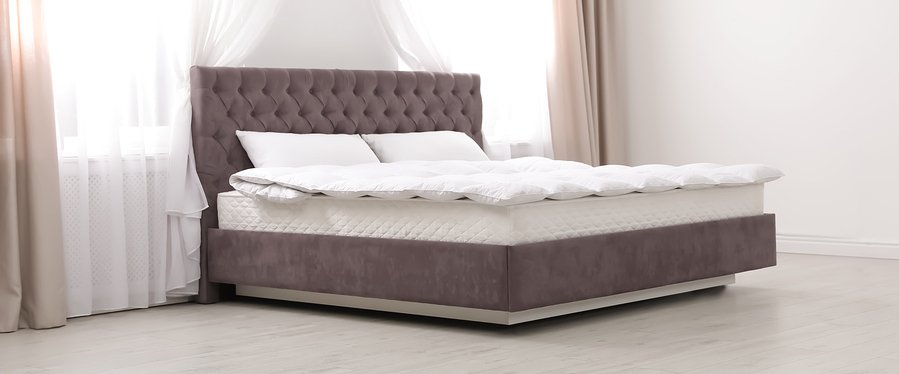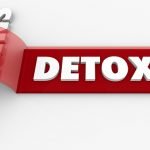Article Summary:
- A new study shows that we may be exposed to dangerous chemicals emitted by our mattresses.
- These chemicals in our mattresses, called VOCs, are associated with health issues such as headaches, central nervous system damage, and cancer.
- Protect yourself from toxins emitted by your mattress by increasing air circulation and lowering the room temperature.
Research On Mattress Toxins
So many things in our daily lives are bad for us. We must carefully consider what to eat and what not to eat to optimize our health. Beverages are yet another consideration, on top of alcohol consumption, sun exposure, avoiding the germs that lurk everywhere from malls to swimming pools, risks from spending the day sitting at work, and so much more. It sometimes seems like the only safe place is tucked away in your bed, curled up in the fetal position. Sorry, we hate to break the bad news, but new research says even our ever-so-comfortable mattresses might be causing us harm over time.
The study, which was conducted at the Technion – Israel Institute of Technology in Haifa, found that the heat generated by our bodies may trigger our mattresses to release potentially dangerous chemicals.1Oz, Kira; et al. “Volatile Organic Compound Emissions from Polyurethane Mattresses under Variable Environmental Conditions.” Environmental Science & Technology. 10 July 2019. Accessed 13 July 2019. http://pubs.acs.org/doi/10.1021/acs.est.9b01557. These results are based on an investigation that involved simulating typical sleeping conditions using eight types of standard polyurethane (think memory foam) mattresses. That meant matching the temperature of a sleeping body, the humidity produced, and the carbon dioxide levels reached.
Even after allowing the mattresses to air out for six months—which wouldn’t happen in reality as most people begin sleeping on a new mattress within a day or two of arrival—all the mattresses in the study were found to emit notable levels of gases known as volatile organic compounds (VOCs). The main source of VOCs in a mattress is the polyurethane foam that is used for the entire mattress in Tempur-Pedic clones, or as an upper layer for added comfort in standard spring mattresses. But flame retardant chemicals and plastic components in the mattresses contribute to the elevated VOC levels as well.
Health Problems Related to VOCs
While the amount of VOCs released were within the levels deemed safe for adults, they were high enough to be considered a potential danger to very young children. And remember that this was after the mattresses had been aired for months. In all likelihood they released greater quantities of VOCs in those initial days and weeks after being unpacked at your house and installed on your bed. What’s more, the testing showed that body heat is responsible for increased VOC emissions from mattresses.
This is all quite disturbing considering the fact that VOCs have been linked to a number of health problems, including:
- Irritation of the eyes, nose, and throat
- Headaches
- Loss of coordination
- Nausea
- Damage to the central nervous system, liver, and kidneys
- Cancer
Protecting Yourself from Toxic Mattress Compounds
So, what can you do to reduce your exposure to VOCs, short of trading in your mattress for a sleeping bag? There are definitely certain strategies you can take to minimize your exposure. Start by improving the ventilation in your bedroom. Open the windows to introduce more fresh air into the room and use fans to keep air circulating. Also, since higher body heat was determined to increase the release of VOCs, keep your bedroom at a cooler temperature all year round and avoid using heavy comforters that trap heat.
If you would prefer to get rid of your old mattress and purchase a new, less hazardous one, there are plenty of options available. Do some research and cross any mattresses containing polyurethane foam off your list. If a company doesn’t state clearly that it does not use polyurethane, move on to another manufacturer. Instead, look for mattresses primarily consisting of cotton and wool, and some contain natural latex. Truly non-toxic mattresses will have a certification from an independent testing organization, such as Greenguard and Oeko-Tex, that holds the products to a higher standard of environmental safety.
References
| ↑1 | Oz, Kira; et al. “Volatile Organic Compound Emissions from Polyurethane Mattresses under Variable Environmental Conditions.” Environmental Science & Technology. 10 July 2019. Accessed 13 July 2019. http://pubs.acs.org/doi/10.1021/acs.est.9b01557. |
|---|











